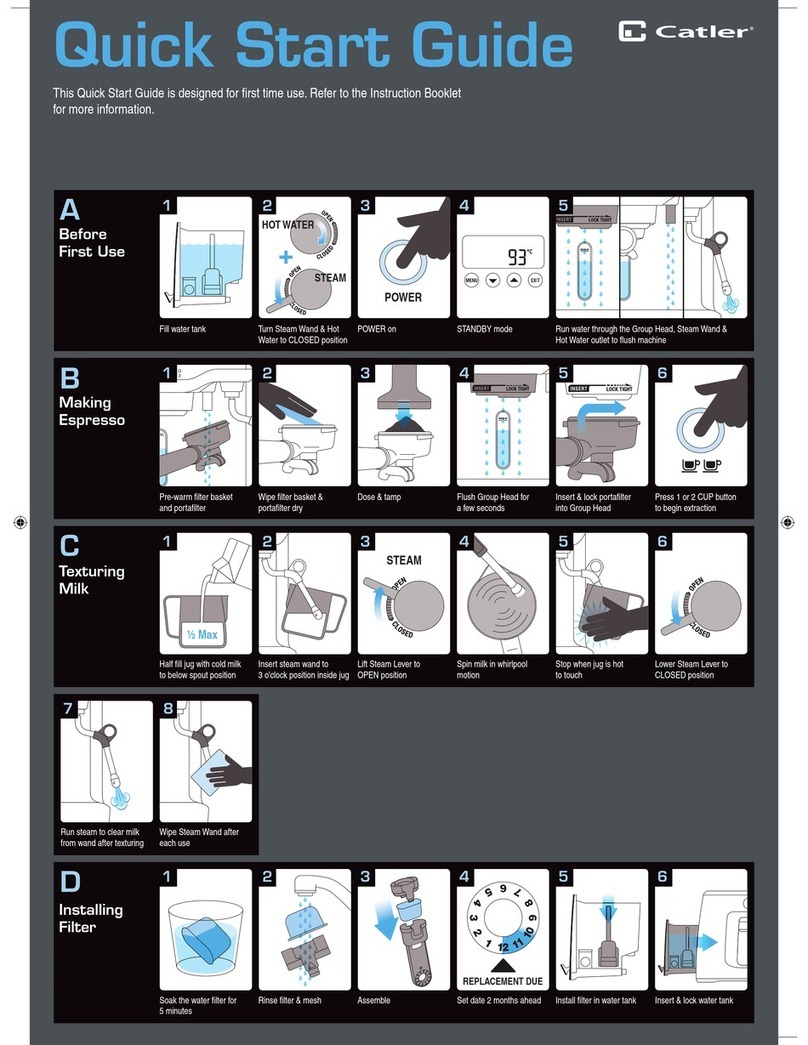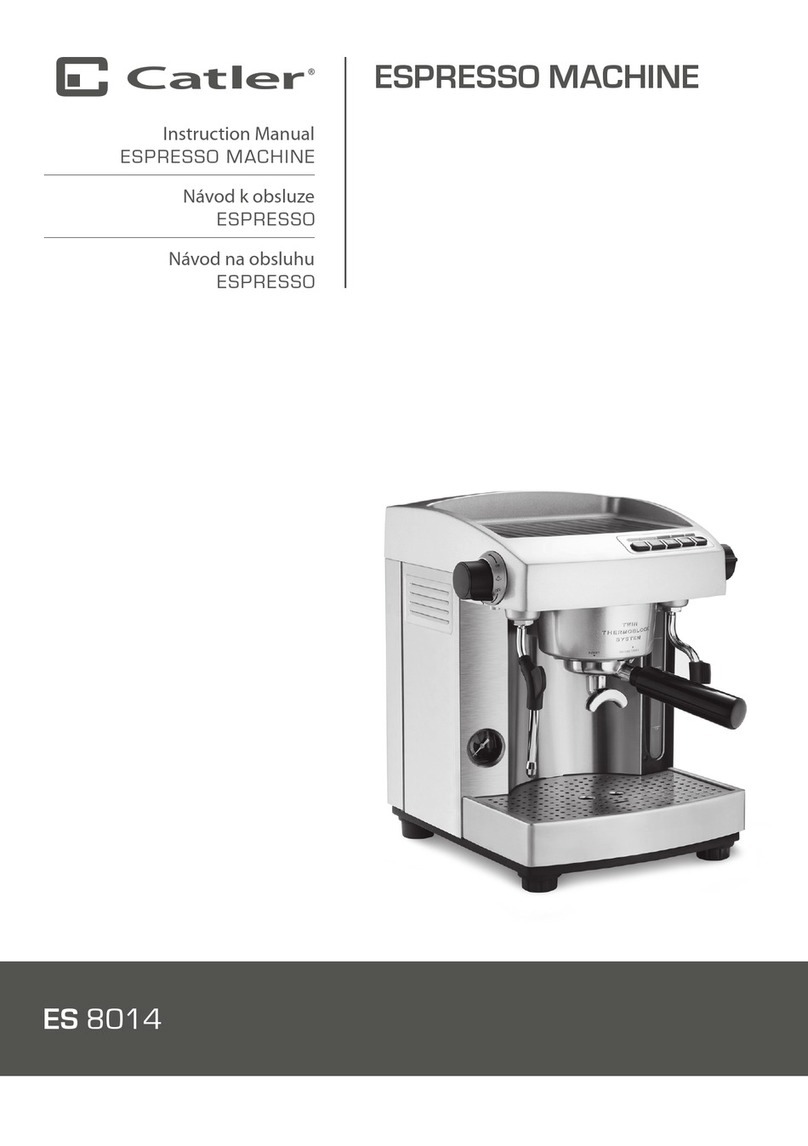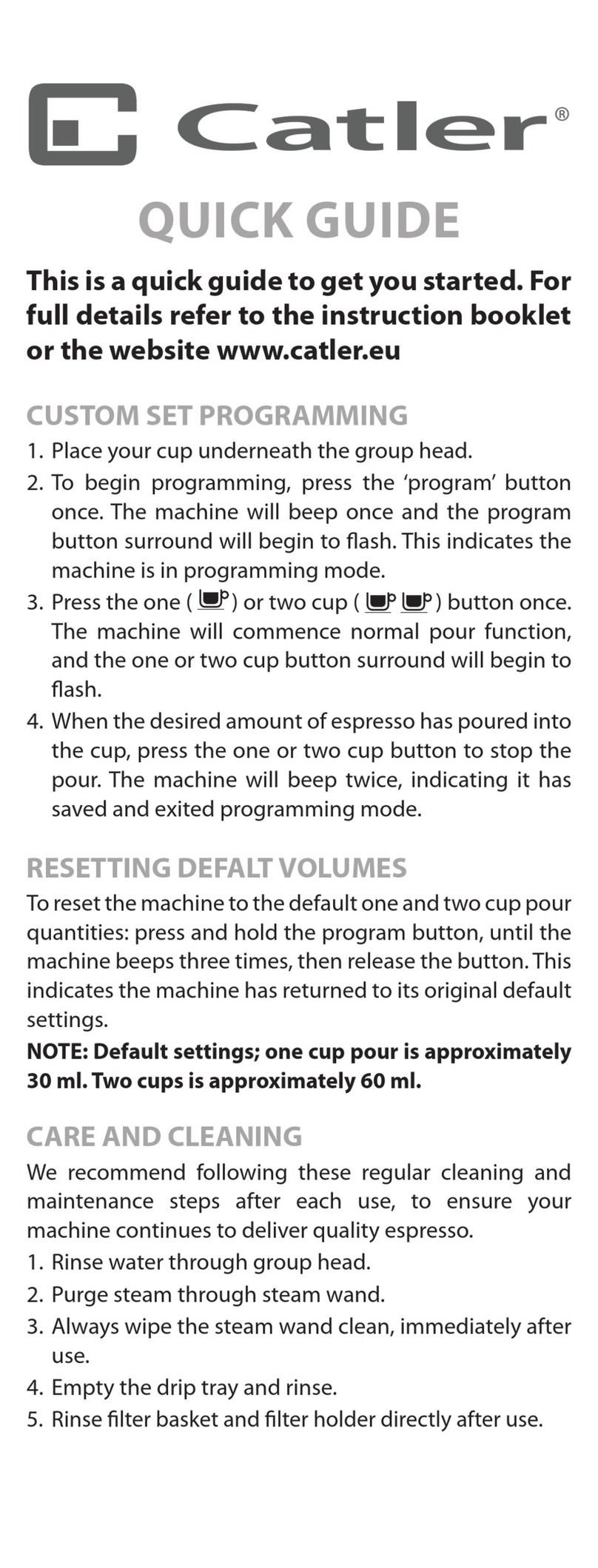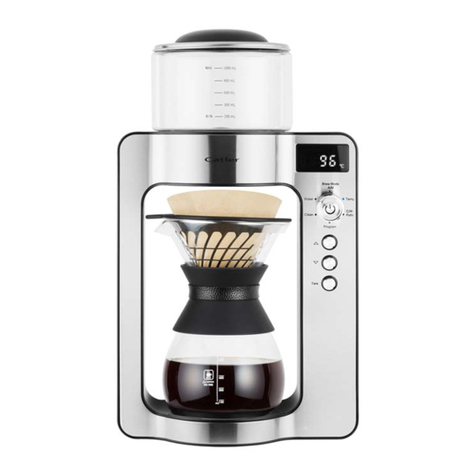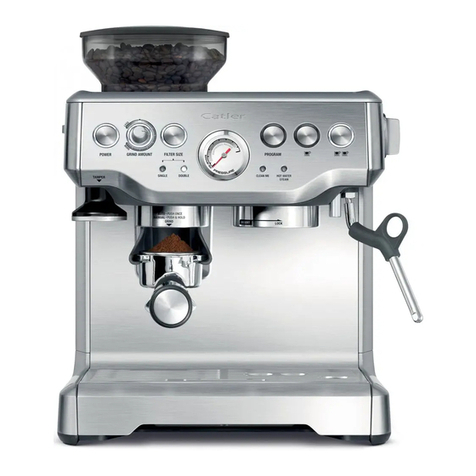
7
CATLER RECOMMENDS SAFETY FIRST
• This appliance is designed to be freestanding and must not be placed in acabinet when in
use.
• Before connecting the appliance to apower socket, check that the nominal voltage on the
appliance'srating label matches the electrical voltage in the socket.
• Connect the appliance only to agrounded socket. For safety reasons, we don’t
recommend using adaptor plugs or extension cords.
• Do not place the appliance on windowsills, sink drip tray or unstable surfaces. Always
place the appliance on an stable, at and dry surface.
• Do not place the appliance on electric or gas cooker or in the vicinity of naked ame.
• Never use the appliance in the near vicinity of abath, shower or swimming pool.
• The appliance is designed for making coee. Use the appliance only for the purpose for
which it has been designed.
• Do not use the product outdoors.
• Use the appliances according to the instructions in this user'smanual. Otherwise injury,
damage to the appliance or dangerous situation might occur.
• During operation, aclear space of at least 15 cm must be left around and above the
appliance to ensure sucient air circulation.
• Only use the top surface of the appliance for warming cups, handles or strainers. Do not
use it to store other items.
• Fill the water tank with clean, cold water. Do not pour hot water or other liquids into it or
place any objects inside it.
• Before turning on the appliance, check that:
– the drip tray together with the grate is installed in position;
– the water tank is lled with asucient amount of water and is properly installed in
position. The water level must not exceed the maximum mark.
• Never use the appliance when the water tank is empty. There is arisk of damage to the
appliance.
• Take great care when operating the appliance to avoid scalding with hot water or steam.
• When using the appliance, check the water level in the water tank regularly. If the water
level drops below the minimum mark, rell the tank according to the instructions in this
manual. Before adding water, rst turn the appliance o and disconnect it from the power
socket.
• Take great care when handling adrip tray full of water. The water can be hot and there is
arisk of scalding or burns.
• Do not move the appliance with acup of coee placed on the drip tray grate or with cups
placed on the surface designed to heat them up.
• Ensure that the power cord does not come into contact with ahot surface.
• When disconnecting the appliance from the power socket, always pull the plug, not the
power cord. Otherwise, damage to the power cord or the socket could occur.
• Make sure that the mains cord and plug does not come into contact with water or other
uid.
